Brand dilution: How a successful new product can harm a brand
| August 10, 2020
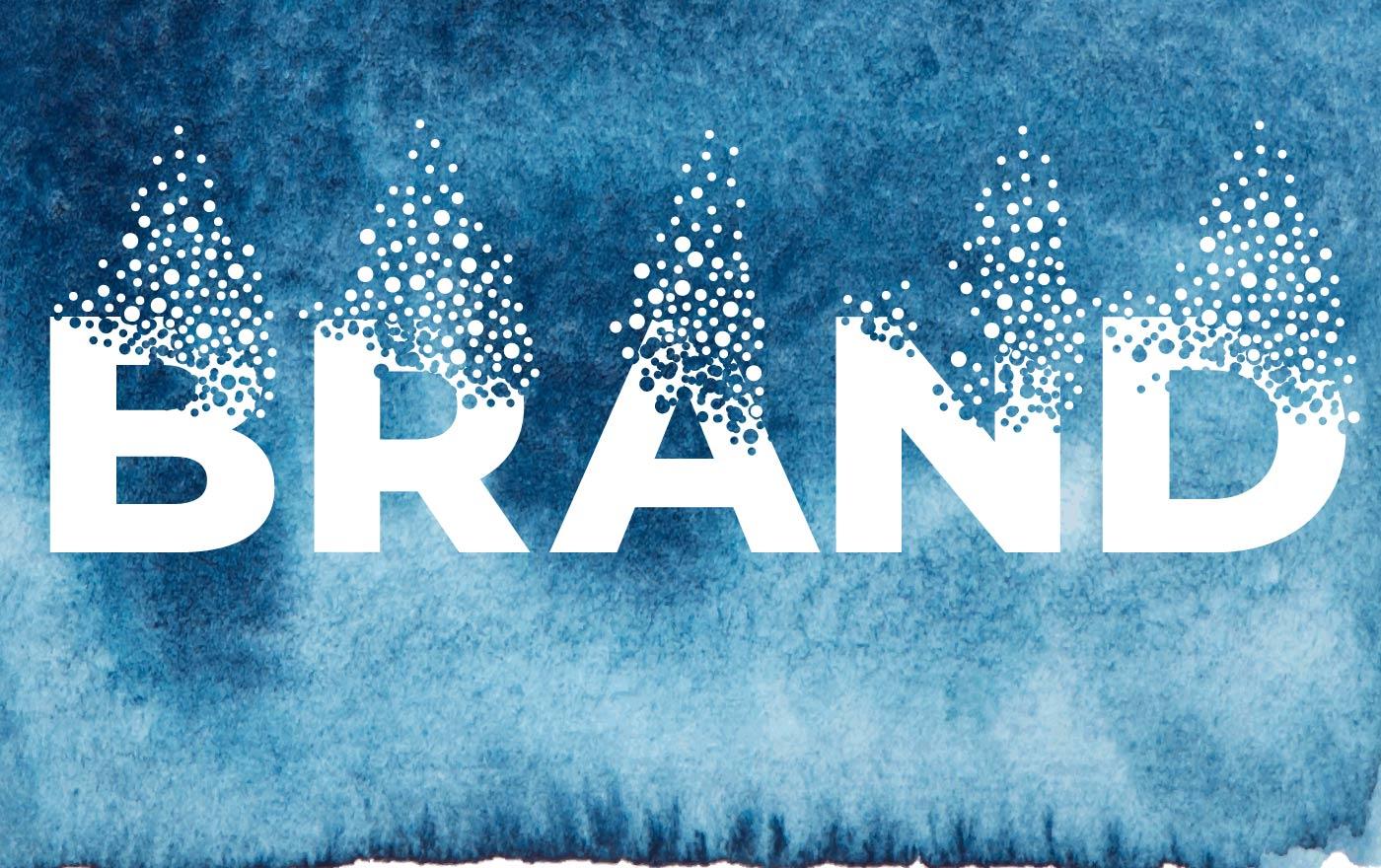
“I have not failed. I’ve just found 10,000 ways that won’t work.” – Thomas Edison
If you’ve ever been to a restaurant with a self-serve soda fountain, chances are that you’ve seen a child mix every flavor together into one cup.
Their parents either tell them to go dump it out, or let them drink it to suffer the consequences of the bad taste.
We’d like to think that these types of ideas are the result of merely adolescent imagination, but as we see all the time, brands are susceptible as well.
They all too often create something new that doesn’t sync well with their brand, and it ends up costing them in the long run, resulting in many of the following consequences:
- Diminished brand image
- Loss of authority
- Reduced loyalty and brand advocacy
These decisions and their resulting outcomes are called brand dilution, which is something you’ll want to avoid. This article will walk you through the pitfalls and give some solid examples to learn from.
What is brand dilution?
Brand dilution is when a brand stretches itself out too thin, resulting in inferior products or services that tarnish their name and image. Most typically, dilution occurs when a company enters new markets or industries that they don’t usually sell in.
Imagine if Microsoft made a ceiling fan, or Coca-Cola created and sold microwaves.
These are hyperbolic illustrations, but they show the importance of avoiding unnecessary extension.
When the brand becomes watered down, this leads to a loss of value.
You’ve probably known a few brands that seemed flawless until they went off-script with a new product or service.
Even if they corrected their mistake, chances are your opinion of them changed. Let’s go into further detail about how brand dilution occurs.
How does brand dilution happen?
Dilution happens when a company creates a new product that fails. However, a failed product doesn’t always result in a diminished brand.
For dilution to occur, there needs to have been a lack of disconnect between this new product and the parent company.
For example, going back to the Microsoft ceiling fan, if Microsoft had created a brand called ‘WindRush’ that focused solely on fans, there would be distance between the parent company (Microsoft) and this new brand/product (WindRush/ceiling fans).

That way, if the ceiling fans flop, WindRush can simply go out of business and Microsoft isn’t negatively affected.
Check out our branding guide if you want a comprehensive overview of all things brand.
Now, you might be wondering what the best ways to avoid watering down your brand are, which we’ll explain later on. But first, let’s look at nine examples of brand dilution to help demonstrate the concept further.
9 illustrative brand dilution examples
“Those who cannot remember the past are condemned to repeat it.” – George Santayana
These nine examples of dilution will shed some light on the potential consequences of overusing and overextending your brand.
Note – Not all of the following products were a total flop. Sometimes, a product brings new revenue, but also harms or lessens the brand in the process. Keep that in mind.
1. Amazon Fire Phone
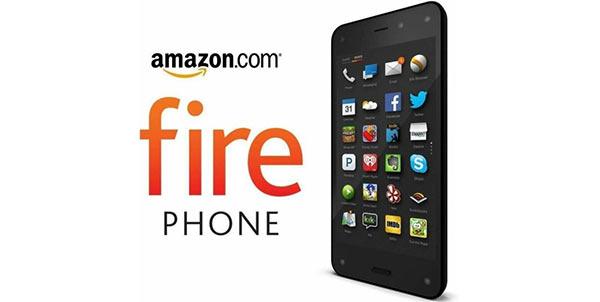
The product: The Amazon Fire Phone, a smartphone with powerful hardware that lacked needed software and apps to be successful.
The result: Part of the success of Amazon is their ability to enter and succeed in new markets. They’ve crushed retail stores, become the ultimate platform for sellers and done quite well streaming TV and movies.
Amazon seemingly has defied the idea that a brand can weaken itself through overexpansion. However, as the Fire Phone showed, they can’t succeed in every market.
The Fire Phone was released at a time when Amazon was still expanding but was mostly known as an online marketplace for books, movies and electronics. Customers were a bit confused by their dive into the smartphone market, but it was short lived.
Though it temporarily dampened the progress Amazon was making, they fortunately gave up on the Fire Phone and regained focus.
Takeaway: Amazon has shown time and time again that it can succeed in new markets, but smartphones just wasn’t one of them.
The key takeaway here is to note their correction, which was to give up on the idea and return to what was working for them.
2. Harley Davidson Perfume
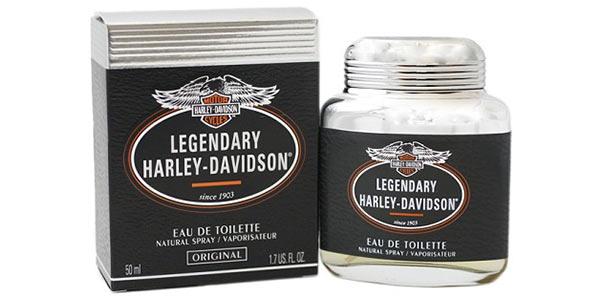
The product: The Harley Davidson Perfume really existed believe it or not. As a product, it pretty much stood for the opposite of the Harley values.
The result: No amount of financial success as a direct result of this perfume would have been worth it.
There is a culture of loyalty attached to Harley, and this product nearly shattered it with how out of touch it was.
When we consider the types of products Harley has made in addition to motorcycles, they’ve all stayed pretty close to what the culture was about: jackets, boots, helmets, etc.
Perfume just doesn’t belong, and doesn’t even speak to the potential capabilities of Harley (whereas something like helmets does, since they’re an accessory to riding).
Takeaway: I think this is my favorite on the entire list. It not only has the absurdity factor, but is also the funniest.
I personally believe the perfume looks cool, with packaging/bottling that has a rugged feel to it like other Harley products. That of course doesn’t matter in the slightest, because it’s not the point at all.
The thing to learn from this gaff is that sometimes dilution can lead to brand damage.
3. Cadbury’s Instant Potatoes
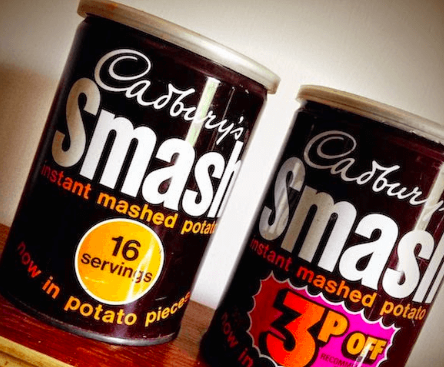
The product: Cadbury’s Smash Instant Mashed Potatoes, were a boxed mix that confused more than it helped.
The result: If I saw this product on shelves today, I would be tempted to buy it, as it might be a revolutionary new chocolate-flavored mashed potato mix.
Unfortunately, that’s not the case. It’s instead just a failed journey into a new market by Cadbury.
I’m sure most customers who saw the ads for this product were confused, thinking Cadbury was bought out or some other extreme line of thinking.
Takeaway: Dilution can sometimes lead to confusion. I would have to say that this one ranks pretty high when it comes to baffling customers.
Also, even though Cadbury wisely created a new brand (Smash) to distance the parent company name from the potato product, they still tied themselves to it by including their ‘Cadbury’ signature logo at the top of packaging.
4. Crystal Pepsi
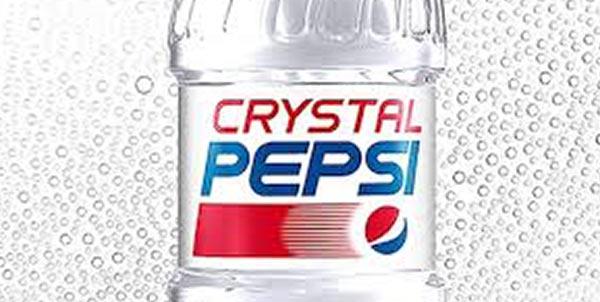
The product: Crystal Pepsi, a transparent version of the normally brown Pepsi cola beverage.
The result: In terms of revenue, Crystal Pepsi exploded with sales. This stuff was flying off the shelves everywhere, especially after Pepsi ran an ad for it on the Super Bowl.
Once again, however, it’s important to point out the illusion of success that plagues brands when it comes to dilution.
Just because it seemed like a neat concept, and just because people wanted to try it, doesn’t make up for the fact it tarnished Pepsi a bit.
Fortunately, Pepsi scrapped it and went back to making their better-tasting, original cola product.
Takeaway: Popular brands have a lot more leeway when it comes to trying new things. However, these liberties should be taken with a grain of salt.
For Pepsi, because of how many people enjoy the main product, seeing a new color was exciting and worth trying. After that, the product was done, and the customers just wanted to drink the regular stuff again.
If it’s any consolation to Pepsi, the Coca-Cola executives panicked and quickly released a failed ‘clear’ product of their own.
5. Virgin Water Filtration System
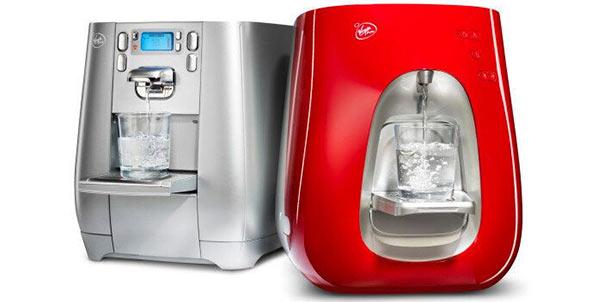
The product: The Virgin Pure Home Water System, a water filtration machine that is somehow tied to different types of transportation.
The result: When I consider an airline for a flight, I prefer them to be experts solely in flying and air safety, rather than a wide variety of things.
The Virgin water filter takes away from Virgin’s image, tarnishing their name and making them look rather silly.
On paper, it seems reasonable that if an airline makes a water filter, it should be of high quality. However, consider the inverse: a brand who makes water filters also flies airplanes. It’s not so appealing.
Takeaway: Virgin Pure is still around, selling different water filtration systems. They openly admit that they’re part of Virgin, which seems to overextend themselves.
Their ‘success’ in selling these products only eats away at their authority.
6. Dr Pepper BBQ Sauce
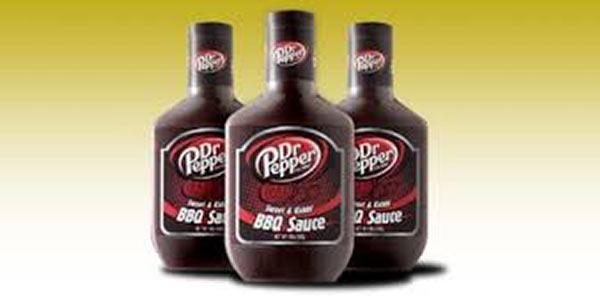
The product: Dr Pepper BBQ Sauce, a bottle of cola-flavored marinade that is intended to bring the Dr Pepper flavor to meats.
The result: Remember when I pointed out that not all examples of dilution stemmed from failed products? This certainly qualifies.
Dr Pepper has seen success through all types of side projects like Diet Dr Pepper and other new flavors. However, BBQ sauce just doesn’t really fit in.
It does appear like some fans enjoy it, but the existence waters down the Dr Pepper name.
Takeaway: Just because you can, doesn’t mean you should. Also, just because something is a ‘success’ in the short term, doesn’t make it a success in the bigger scheme of things.
Entering a new market to make a little extra revenue is great up until the point it spreads you too thin.
7. Coca-Cola Clothing
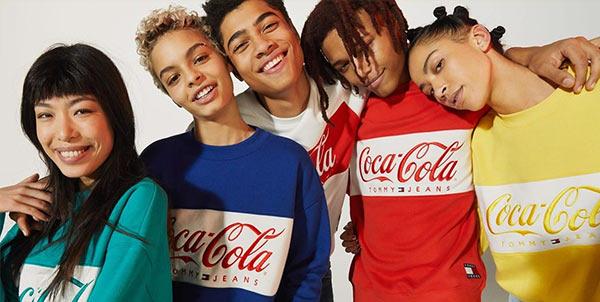
The product: A line of Coca-Cola clothing in the 1980s, which was basically a few shirts with the Coke logo and colors printed on the front.
The result: Coca-Cola is good at making delicious soda, but that is the extent of their expertise. The clothes line was abandoned pretty quickly after being released.
Today, the Coca-Cola website still sells clothes, but it has a much different feel to it than what they were trying to accomplish with their clothing line in the 80s.
This time around, they seem to understand that they’re simply a soda brand offering their logo on clothing, instead of a soda brand entering the fashion market.
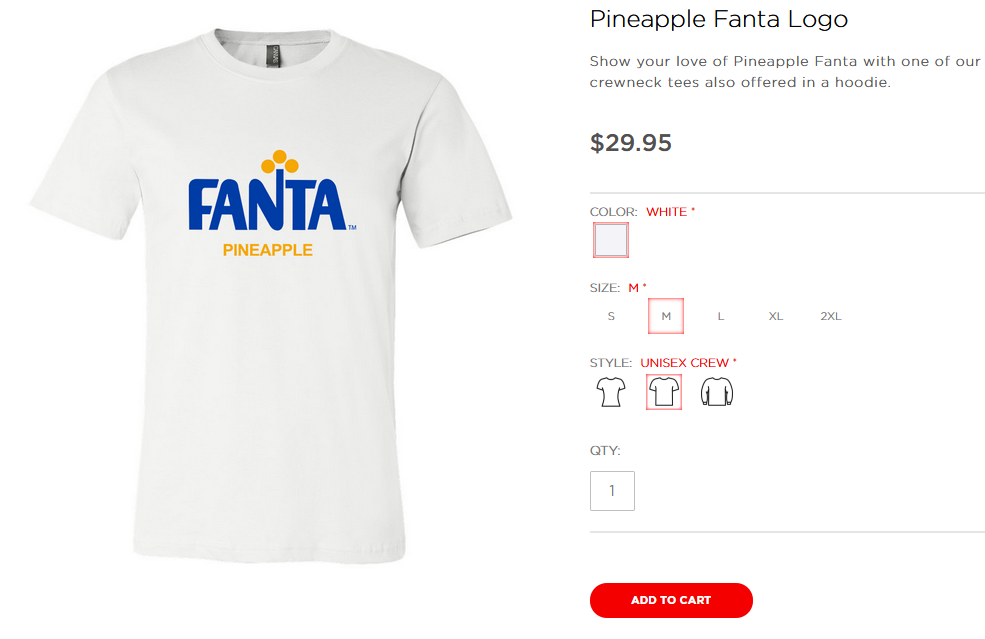
Also, I doubt many customers have purchased a shirt like above, especially for $29.95 USD. I almost feel like this is an elaborate prank from Coke.
Takeaway: Selling merchandise would have been one thing, but trying to infiltrate the fashion market was another.
Instead, Coke would have benefited from trying new flavors of their drink (which they eventually did, successfully).
8. Apple Newton
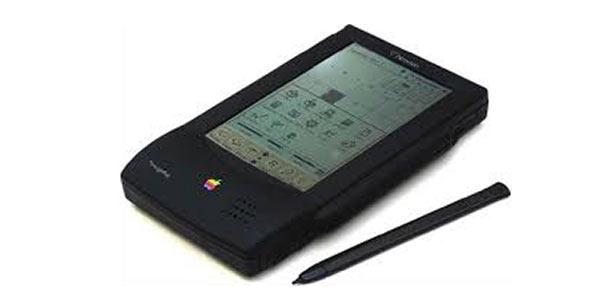
The product: Apple Newton, the first PDA ever created, had futuristic, mind-blowing features, but ultimately failed.
The result: Once again, we have an amazing, revolutionary product. And, once again, it overextends the brand and lessens it.
The Newton truly was impressive and way ahead of its time. Sometimes, being ahead of your time is a bad thing. Apple just wasn’t ready to focus the necessary time on this product.
Takeaway: Most of our smartphones today resemble the Newton somewhat, so we owe it to Apple for taking this early leap of faith.
However, they probably felt like they leaped off a cliff rather than into a successful new market.
Had internet access been much more prevalent, the Newton might have been able to exist successfully next to the Mac.
9. Windows Phone
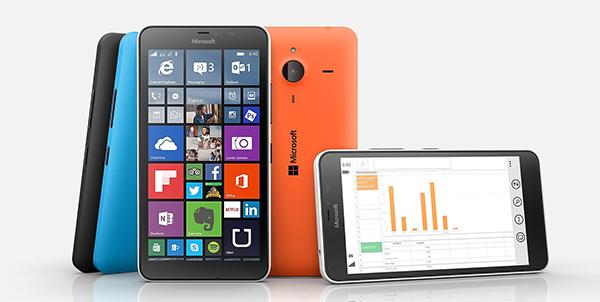
The product: Windows Phone from Microsoft, which burst into an oversaturated market and took focus away from Microsoft software development.
The result: Microsoft had to cut their losses with the phone project after a few years of building up their mobile teams and partnering with other mobile-focused brands.
It’s fair to question why Xbox and Surface didn’t weaken the brand, but it’s not always so concrete. Sometimes, a new product just isn’t a good fit.
Takeaway: We can’t always explain why a brand can successfully enter a new market with one product, while failing to do the same with another.
That seems to be the case for Microsoft and mobile phones, since they’ve successfully entered the video game world (Xbox) and tablet market (Surface) without tarnishing their name.
The Windows Phone couldn’t compete with Android and iPhone, but even if they could have, it still might have been a bad idea to try.
Bonus example: Michael Jordan playing baseball
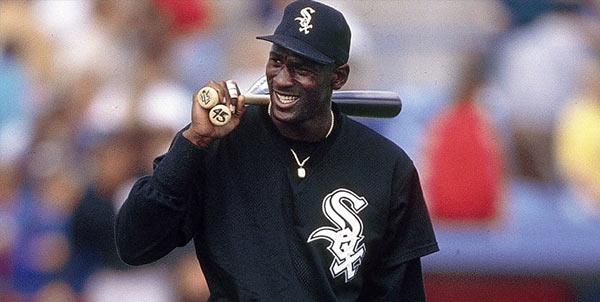
The decision: Michael Jordan, arguably the best basketball player of all time, decided to retire from the sport in the prime of his career to play baseball instead.
The result: Michael Jordan is a global brand, and everything the player does, from movies to commercials, seems to add to its success.
However, playing baseball was quite the failure. Not only did Michael stink at the game (he failed to succeed even as a minor-leaguer), but it warped his brand completely, at least briefly.
We had become so accustomed to seeing Jordan win all the time that watching him fail was awkward. Luckily for the sake of his iconic brand, he returned to basketball.
Takeaway: We cannot do it all. Amazon learned this in our Fire Phone example, and Michael Jordan experienced this harsh realization when switching to baseball.
Seeing these examples helps us notice patterns that lead to a tarnished brand. Let’s explore this concept further with some helpful tools.
How to avoid brand dilution
Unfortunately, there are no guides or simple rules to follow to prevent brand dilution. Sometimes, it happens.
When it does, the best thing to do is cut your losses and go back to what made you great in the first place.
That being said, there are definitely some ways to increase your chances of avoiding it. Here are some tips to guide you:
Don’t change the underlying aspect of why consumers enjoy your products. Crystal Pepsi failed because the taste wasn’t as good as the original Pepsi cola, plain and simple.
Consider co-branding if seeking to enter new markets. It’s great that you want to win over a new market, but it’s pretty tough without some help. Think about partnering up to reduce some difficulty.
We can’t truly change who we are or what we’re really good at. Harley Davidson can’t sell perfumes, Amazon can’t make smartphones and Michael Jordan can’t hit home runs against pro pitchers. Don’t overcomplicate things or make life difficult.
To further guide you down this path, let’s take a look at a few examples of times a brand extended itself successfully.
3 examples of brand extension that worked
“Determine who you are and what your brand is, and what you’re not. The rest of it is just a lot of noise.” – Geoffrey Zakarian
As discouraging as the above examples are, they aren’t indicative of every extension attempt.
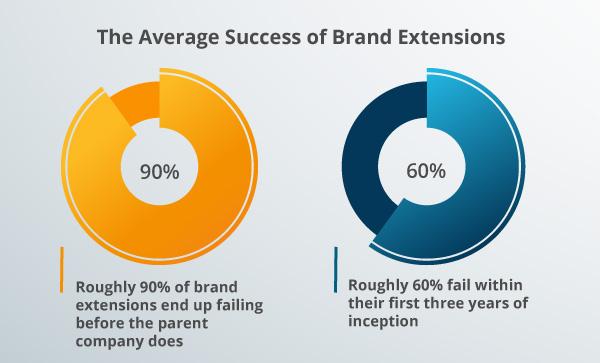
Though it certainly is difficult to expand about a brand, the numbers are promising enough to try, given the potential rewards.
Now that we’ve gotten plenty of ideas about what not to do, let’s check out the brands who did it right.
1. Rice Krispies Treats
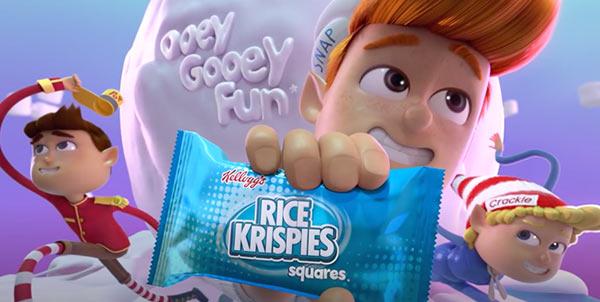
The product: Rice Krispies Treats, a marshmallow bar made using Rice Krispies cereal.
Why it worked: Instead of trying something drastic (Rice Krispies steak sauce, etc), this idea made a lot of practical sense.
Since the cereal is normally not too sweet, adding the marshmallows to hold everything together wasn’t overwhelming.
The takeaway: Think of ways your current products or services might be changed in a unique way that could benefit you.
2. Apple iPod

The product: iPod popularized and normalized mp3 players and moved consumers away from traditional formats like CDs and cassette tapes.
Why it worked: Because it utilized Apple’s expertise, hooking up to a computer to import songs, they were able to create something special.
In terms of success, it thrived due to Apple’s superior marketing compared to competing mp3 players.
The takeaway: Apple didn’t stray too far from their talents when joining the mp3 craze. Consider how you might enter a new market with a product that syncs with your current talents.
3. Taco Bell Taco Sauce
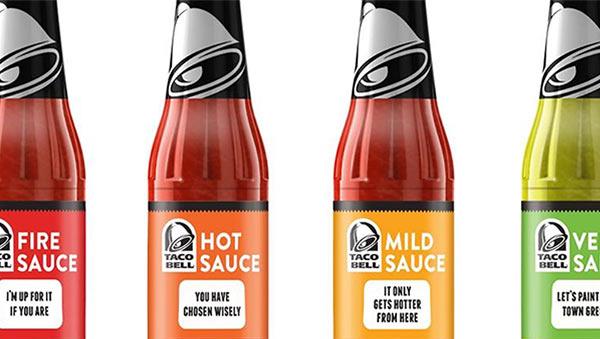
The product: An individual bottle of the Taco Bell taco sauce for sale, which offered customers a chance to bring the taste of the fast food restaurant to their own cooking.
Why it worked: Taco Bell released their taco sauce in bottles and mix-packets to grocery stores for purchase.
This didn’t weaken the brand at all, since they were essentially offering the same product they were known for, just in a different avenue.
The takeaway: Brands can get creative and extend themselves without ruining their image. Taco Bell harnessed their creativity without going extreme.
Take into account the patterns of the above examples. Compare the successful decisions with the failures to ensure you don’t repeat the same mistakes.
Final thoughts
Invariably, someone out there will have a seemingly transcendent idea for something new. On some occasions, these ideas end up actualizing into something successful. More often than not, they overextend.
Just remember: your brand name and brand image are more important than a gimmick that pulls in some extra revenue.
Think long term. Think brand.

